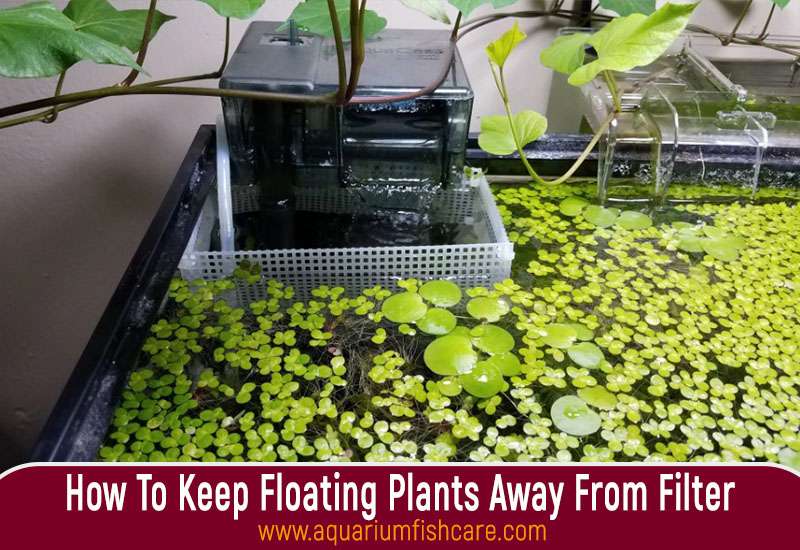Fish That Eat Black Beard Algae: The Siamese Algae Eater (SAE) is a fish that eats Black Beard Algae. This fish can help control black algae in aquariums.
Black beer algae (BBA) is a common nuisance for aquarium owners, and finding a solution to eradicate it can be challenging. One effective method is introducing fish that feed on this particular type of algae. The Siamese Algae Eater (Crossocheilus oblongus) is known to consume BBA and can thus be a valuable addition to an aquarium plagued by this issue.
However, before making a decision, it’s important to consider the compatibility of this fish with other tank inhabitants and the overall tank conditions. Understanding the dietary habits and behaviors of fish that eat Black Beard Algae is crucial for maintaining a clean and healthy aquatic environment.

Siamese Algae Eater
The Siamese Algae Eater, scientifically known as Crossocheilus oblongus, is a remarkable aquatic creature that has gained popularity for its ability to combat the persistent Black Beard Algae in aquariums.
Appearance And Habitat
The Siamese Algae Eater boasts a slender body with a distinct black stripe running from its head to the tail, providing a striking appearance in any tank. Their natural habitat includes fast-flowing rivers and streams in Southeast Asia.
Diet And Behavior
- Diet: Siamese Algae Eaters are primarily herbivores, feeding on algae and plant matter. They exhibit a voracious appetite for Black Beard Algae, making them a valuable addition to any aquarium struggling with this nuisance.
- Behavior: These fish are known for their peaceful demeanor and can coexist harmoniously with various tank mates. They are active swimmers, constantly looking for algae to nibble on.
Effectiveness In Controlling Black Beard Algae
Siamese Algae Eaters have proven to be effective in controlling Black Beard Algae infestations in aquariums. Their consistent grazing helps keep the algae growth in check, providing a natural solution to this common problem without chemical interventions.
Other Algae-eating Fish
Some fish, like Siamese Algae Eaters, can consume Black Beard Algae, acting as natural cleaners for your aquarium. Additionally, flagfish are known to devour this algae, yet they can display aggressive behavior. Choosing algae-eating fish is essential to manage Black Beard Algae effectively.
The Role Of Fish In Algae Control
Fish play an important role in controlling algae growth in aquariums. They can help to keep the tank clean and maintain a healthy balance in the ecosystem. By consuming algae, these fish actively prevent the overgrowth of unwanted algae species such as black beard algae.
Alternative Fish Species For Algae Control
If you’re looking for alternative fish species to control black beard algae in your aquarium, consider the following options:
| Fish Species | Description |
|---|---|
| Siamese Algae Eater (SAE) | The Siamese Algae Eater is known to consume black beard algae, making it an effective option for controlling its growth in your tank. However, keep in mind that SAEs can grow quite large and require an adequate tank size. |
| Flag Fish | Flag Fish are another species that eat black beard algae. However, they can be aggressive towards other fish, so it’s important to consider their compatibility with the existing inhabitants of your aquarium. |
When introducing any fish to your tank for algae control, consider their specific requirements regarding water conditions, tank size, and compatibility with other fish. It’s also worth noting that while these fish can eat blackbeard algae, they may not completely eradicate it. Therefore, it’s important to combine their presence with other measures such as reducing light intensity and manually removing algae as much as possible.
In conclusion, if you’re struggling with black beard algae in your aquarium, adding algae-eating fish like Siamese Algae Eaters or Flag Fish can be a useful tool in controlling its growth. Just provide them with a suitable environment and monitor their behavior to ensure their compatibility with other tank inhabitants. Remember, fish alone may not completely solve the issue, so it’s essential to implement other preventive measures as well.
Natural Remedies
Siamese Algae Eaters or Crossocheilus oblongus are fish that can eat black beard algae, providing a natural remedy for controlling this type of algae in your aquarium. However, when using them as a solution for black beard algae, there are certain considerations and limitations.
Reducing Light Intensity
One effective method to combat black beard algae naturally in your aquarium is to reduce the light intensity. Black beard algae thrives under high-intensity light conditions, so dimming the lighting can create an unfavorable environment for its growth. Consider using lower wattage bulbs or adjusting the distance between the light source and the tank to decrease the light intensity. This will help prevent the algae from spreading and allow other fish and plants to thrive.
Manual Removal Of Algae
Another effective way to address black beard algae is to manually remove it from the tank. Use a soft-bristle toothbrush or a dedicated algae scrubber to remove the algae from affected surfaces gently. Take care not to damage the plants or disturb the substrate while doing this. Regularly removing the visible algae will reduce its appearance and remove the nutrients it feeds on, helping to control its growth.
Using Hydrogen Peroxide
Hydrogen peroxide can be a useful tool in combating black beard algae naturally. First, remove the affected plant or hardscape from the tank. Then, spray a squirt bottle with hydrogen peroxide directly on the affected area. Let the hydrogen peroxide sit for a few minutes, allowing it to penetrate the algae. Afterward, rinsing the plant or hardscape thoroughly with dechlorinated water before putting it back into the aquarium can help prevent any harm to your fish or other organisms in the tank. Remember to follow proper dilution guidelines and safety precautions when using hydrogen peroxide.
In conclusion, reducing light intensity, manually removing algae, and using hydrogen peroxide can be effective strategies for combating black beard algae naturally. These methods help create an unfavorable environment for the algae to thrive, remove visible algae, and disrupt its growth cycle. Implementing these natural remedies in your aquarium maintenance routine can help control blackbeard algae and create a healthier aquatic environment for your fish and other inhabitants.
Community Perspectives
One effective solution to combat black beard algae in your aquarium is using Siamese Algae Eaters (SAE), also known as Crossocheilus oblongus. While they do eat the algae, certain limitations must be considered before utilizing them as your solution.
Experiences With Siamese Algae Eaters
In my community, many aquarium enthusiasts have shared positive experiences with Siamese Algae Eaters (SAE) in combating Black Beard Algae. These fish are known for their voracious appetite for algae, including the stubborn black variety.
Comparison With Other Algae-eating Fish
When compared with other algae-eating fish, such as Otocinclus Catfish or Amano Shrimp, the SAE stands out for its effectiveness in controlling Black Beard Algae. While other species have their benefits, hobbyists highly value the SAE’s ability to target and consume this specific type of algae.
Best Practices
When dealing with black beard algae in your aquarium, it’s crucial to implement best practices to ensure the well-being of your aquatic environment. This involves maintaining optimal tank conditions, combining algae-eating fish and natural remedies, and understanding effective tips for preventing the resurgence of black beard algae.
Maintaining Optimal Tank Conditions
Maintaining optimal tank conditions is essential for controlling black beard algae. Ensure proper water parameters, including pH levels, temperature, and nitrate levels, to create an environment that discourages the growth of this persistent algae species.
Combining Algae-eating Fish And Natural Remedies
Combining algae-eating fish, such as Siamese algae eaters, and natural remedies can effectively combat black beard algae. Additionally, introducing algae-eating shrimps, such as Amano shrimps, can offer natural control over the algae infestation.
Tips For Preventing Black Beard Algae
Preventing the resurgence of black beard algae involves maintaining a well-balanced aquarium ecosystem. This includes implementing regular water changes, avoiding overfeeding, and ensuring adequate water flow to inhibit algae growth. Additionally, consider reducing the lighting duration and intensity to create an environment less conducive to black beard algae.
Frequently Asked Questions For Fish That Eat Black Beard Algae
Do Any Fish Eat Black Beard Algae?
The Siamese Algae Eater (SAE) is known to eat black beard algae, but its effectiveness is limited.
What Fish Get Rid Of Black Algae?
The Siamese Algae Eater (SAE) is known to eat black beard algae in aquariums.
How Do I Get Rid Of Blackbeard?
To eliminate Blackbeard algae, consider using Siamese Algae Eaters, reducing light intensity, and manually cleaning affected areas. Hydrogen peroxide can also be used for natural removal. You may also consider consulting a professional for further solutions.
How Do You Get Rid Of Black Beard Algae Naturally?
To naturally get rid of black beard algae, use hydrogen peroxide on affected areas, rinse with dechlorinated water, and replace into the aquarium.
Can Siamese Algae Eaters Eliminate Black Beard Algae?
Yes, Siamese Algae Eaters can help control blackbeard algae in your aquarium.
How Effective Are Siamese Flying Foxs in Eating Black Algae?
Siamese Flying Fox, also known as SAE, can be used to control black algae growth.
What Steps Can I Take To Remove Black Beard Algae Naturally?
Using hydrogen peroxide can help in removing black beard algae naturally from your tank.
Conclusion
While Siamese Algae Eaters may help combat Black Beard Algae issues, not all problems may be solved. Seeking multiple solutions and proper tank maintenance is key to effectively managing this persistent aquarium nuisance. Experimenting with different strategies can lead to a healthier aquatic environment for your fish.


